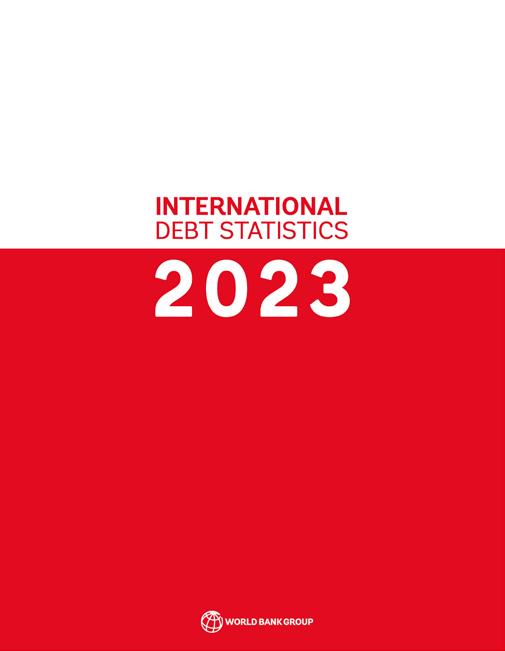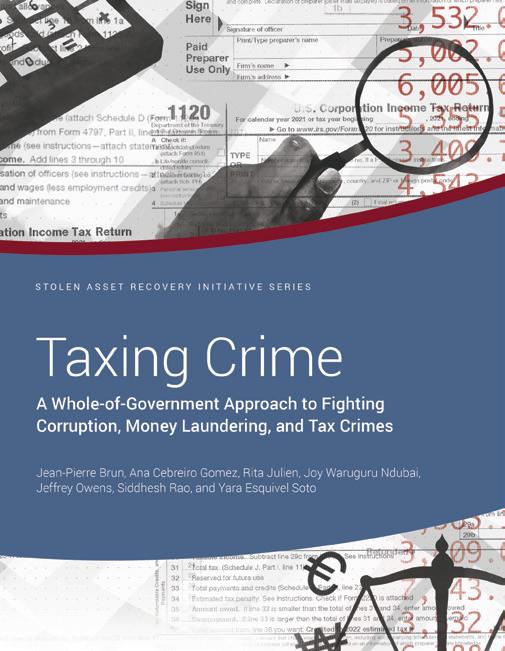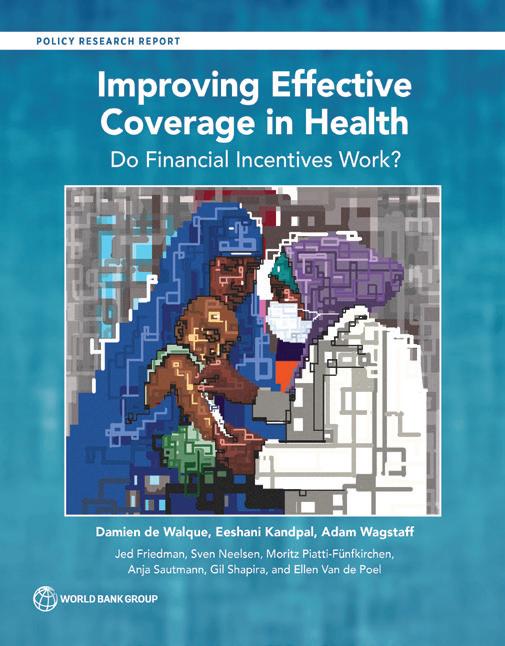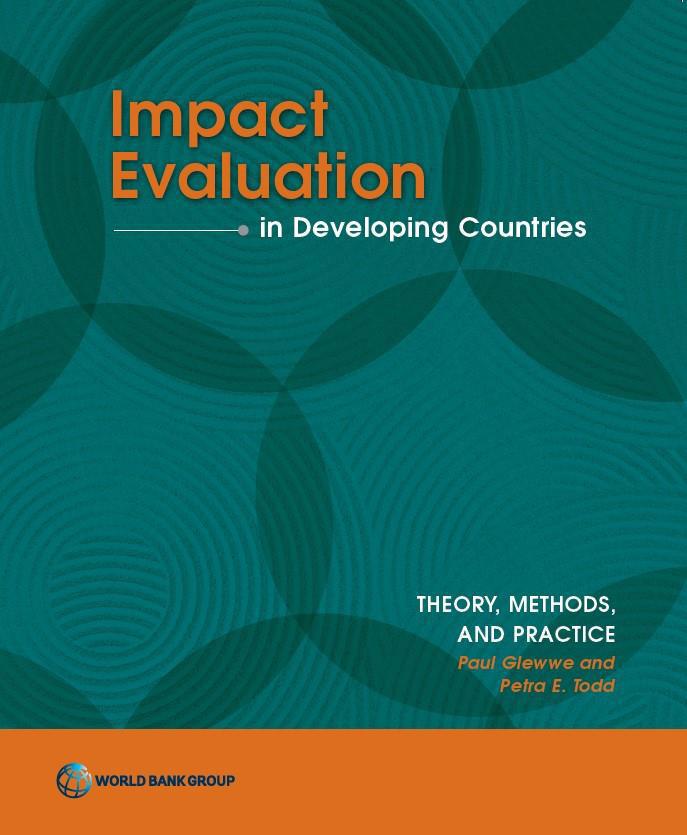
10 minute read
Featured Titles
THE GLOBAL FINDEX DATABASE 2021
Financial Inclusion, Digital Payments, and Resilience in the Age of COVID-19
By Asli Demirgüç-Kunt, Leora Klapper, Dorothe Singer, and Saniya Ansar
The fourth edition of Global Findex—the world's most comprehensive database on financial inclusion—offers a lens into how people accessed and used financial services during COVID-19, when mobility restrictions and health policies drove increased demand for digital services of all kinds. Published every three years since 2011, Findex is the only global demand-side data source allowing for global and regional cross-country analysis to provide a rigorous and multidimensional picture of how adults save, borrow, make payments, and manage financial risks. Findex 2021 data were collected from national representative surveys of about 130,000 adults in over 120 economies. The latest edition includes new series measuring financial health and resilience and contains more granular data on digital payments adoption, including merchant and government payments. The Global Findex is an indispensable resource for financial service practitioners, policy makers, researchers, and development professionals.
August 2022. 130 pages. Stock no. C211897 (ISBN: 978-1-4648-1897-4). US$43.95
INTERNATIONAL DEBT STATISTICS 2023
By the World Bank
International Debt Statistics (IDS), a longstanding annual World Bank publication, featuring external debt statistics and analysis for around 125 low- and middle-income countries that report to the World Bank Debt Reporting System. IDS is internationally recognized as the premier publication for comprehensive cross-country comparable data on the external obligations of low- and middle-income countries; demand for IDS has been consistently high. IDS provides information on external debt stocks, flows and projected debt service payments, major economic aggregates, key debt ratios, average terms of new commitments, the currency composition of long-term debt and volume and terms of debt restructuring agreements. It also includes unique, highly disaggregated information by borrower, creditor type, and creditor country. The IDS coverage and content is continuously evolving to reflect changes in borrowing patterns and instruments and provide a comprehensive and timely account of the external debt obligations of each low- and middle-income country. These data aim to support debt management, institutional lending decisions and debt-related policy decisions and initiatives of the international community, and broad-based analysis of international capital flows.
INTERNATIONAL DEBT STATISTICS
November 2022. 204 pages. Stock no. C211902 (ISBN: 978-1-4648-1902-5). US$49.95
BRIDGING THE TECHNOLOGICAL DIVIDE
By Xavier Cirera, Diego Comin, and Marcio Cruz
WORLD BANK PRODUCTIVITY PROJECT
July 2022. 228 pages. Stock no. C211826 (ISBN: 978-1-4648-1826-4). US$49.50
Many of the main problems facing developing countries today and tomorrow—growth, poverty reduction, inequality, food insecurity, job creation, recovery from the COVID-19 pandemic, and adjustment to climate change—hinge on adopting better technology, a key driver of economic development. Access to technology is not enough: firms have to adopt it. Yet it is precisely the uptake of technology that is lagging in many firms in developing countries. The COVID-19 pandemic drove a big uptake of technology, especially digital technologies. Bridging the Technological Divide: Technology Adoption by Firms in Developing Countries takes advantage of this shift to delve into which firms have adopted and use technologies and to what purpose. To do so, it proposes a new approach to measure and understand the adoption and use of technologies by firms. Specifically, it leverages a new data collection instrument, the Firm-level Adoption of Technology (FAT) survey, which provides a very rich characterization of the technologies used and the processes of adoption by firms in developing countries. This book helps open the "black box" of technology adoption by firms. The seventh volume in the World Bank Productivity Project series, it will further research and policy that can be used to support technology adoption by firms in developing countries.
TRADE THERAPY
Deepening Cooperation to Strengthen Pandemic Defenses
By the World Bank and the World Trade Organization
August 2022. 160 pages. Stock no. C211885 (ISBN: 978-1-4648-1885-1). US$43.95
The COVID-19 pandemic has exposed the upsides and downsides of international trade in medical goods and services. Open trade can increase access to medical services and goods (and the critical inputs needed to manufacture them), improve quality and variety, and reduce costs. But excessive concentration of production, restrictive trade policies, supply chain disruptions, and regulatory divergence can jeopardize the ability of public health systems to respond to pandemics and other health crises. This report, coordinated by Nadia Rocha and Michele Ruta at the World Bank and Marc Bacchetta and Joscelyn Magdeleine at the World Trade Organization, provides new data on trade in medical goods and services and medical value chains; surveys the evolving policy landscape before and during the pandemic; and proposes an action plan to improve trade policies and deepen international cooperation to deal with future pandemics.
A Practical Guide for Bank Supervisors
By Pierre-Laurent Chatain, Emile van der Does de Willebois, and Maud Bökkerink
Money laundering and terrorist financing undermine the integrity of financial systems and impact a jurisdiction’s economy. Challenges to their supervision and prevention were exacerbated by the 2008 financial crisis, as the need for funds undermined vigilance over their provenance. Money laundering and terrorist financing expose financial institutions and sectors to the risk of severe enforcement action by public authorities or the loss of relationship facilities by their private sector counterparts. This second edition reflects evolving challenges to the integrity and stability of financial systems, recent trends in enforcement, and changes to international standards emphasizing a risk-based approach. It provides: Examples of money-laundering and terrorist-financing supervisory frameworks in a range of countries; Best practices in supervising and enforcing money-laundering and terrorist-financing laws and regulations; Advice on how jurisdictions can incorporate enforcement of laws and regulations on money laundering and terrorist financing into their supervisory frameworks.
This guide will be of interest to bank supervisors and readers working in finance, corruption prevention, law, accounting, and corporate governance.
July 2022. 198 pages. Stock no. C211851 (ISBN: 978-1-4648-1851-6). US$43.00
TAXING CRIME
A Whole-of-Government Approach to Fighting Corruption, Money Laundering, and Tax Crimes
By Jean-Pierre Brun, Ana Gomez, Rita Julien, Joy Ndubai, Jeffrey Owens, Siddesh Rao, and Yara Soto
This volume is an advocacy document that was drafted jointly by the World Bank–United Nations Office on Drugs and Crime (UNODC) Stolen Asset Recovery Initiative (StAR) and the WU Global Tax Policy Centre. The study's main objective is to support policy makers in designing legal and operational frameworks and practices to enhance cooperation between tax authorities and law enforcement agencies (LEAs) at the domestic and international levels, and to build on synergies between investigations and enforcement in the context of tax crimes, money laundering, and corruption. The study draws upon the work of a joint WB, UNODC, and WU Global Tax Policy Centre project on Tax and Good Governance, and examples of how tax audits and investigations can lead to uncovering white collar crime, and how corruption investigations in turn can lead to prosecuting tax evasion or simply the recovery of unpaid taxes. It identifies existing gaps and provides practical recommendations to tax authorities and LEAs that are seeking to implement or refine their strategies.

STAR INITIATIVE
WHERE IS THE VALUE IN THE CHAIN?
Pathways out of Plastic Pollution
By the World Bank

July 2022. 100 pages. Stock no. C211881 (ISBN: 978-1-4648-1881-3). US$43.95
Where Is the Value in the Chain? Pathways out of Plastic Pollutionaims to support policy makers in their efforts to address plastic pollution. By examining the economic and financial implications of plastic management, the report provides key recommendations on how to create a comprehensive approach to addressing plastic pollution and to help policy makers make informed decisions for plastic pollution management. The report brings together new evidence from three analytical undertakings: Tackling Plastic Pollution: Toward Experience-Based Policy Guidance—A review of existing literature and a summary of findings from the ex post analysis of the effectiveness of plastics policies. The Plastic Substitution Tradeoff Estimator—An innovative model that estimates the external costs of 10 plastic products and their alternatives along their entire life cycle. The Plastic Policy Simulator (PPS)—A country-level, data-driven model for policy analysis to better describe the impacts of different policy instruments and policy packages on individual economic agents and on the plastic value chain at large.
REVISITING TARGETING IN SOCIAL ASSISTANCE
A New Look at Old Dilemmas
Edited by Margaret Grosh, Phillippe Leite, Matthew Wai-Poi, and Emil Tesliuc
HUMAN DEVELOPMENT PERSPECTIVES
June 2022. 574 pages. Stock no. C211814 (ISBN: 978-1-4648-1814-1). US$73.00
Targeting is a commonly used, but much debated, policy tool within global social assistance practice. Revisiting Targeting in Social Assistance: A New Look at Old Dilemmas examines the well-known dilemmas in light of the growing body of experience, new implementation capacities, and the potential to bring new data and data science to bear.
The book begins by considering why or whether or how narrowly or broadly to target different parts of social assistance and updates the global empirics around the outcomes and costs of targeting. It illustrates the choices that must be made in moving from an abstract vision to implementable definitions and procedures, and in deciding how the choices should be informed by values, empirics, and context. The importance of delivery systems and processes to distributional outcomes are emphasized, and many facets with room for improvement are discussed. The book also explores the choices between targeting methods and how differences in purposes and contexts shape those.
IMPROVING EFFECTIVE COVERAGE IN HEALTH
Do Financial Incentives Work?
By Damien de Walque, Eeshani Kandpal, Adam Wagstaff, Jed Friedman, Sven Neelsen, Moritz Piatti-Fünfkirchen, Anja Sautmann, Gil Shapira, and Ellen Van de Poel
In many low- and middle-income countries, health coverage has improved dramatically in the past two decades, but health outcomes have not. As such, effective coverage—a measure of service delivery that meets a minimum standard of quality—remains unacceptably low. This book examines one specific policy approach to improving effective coverage: financial incentives in the form of performance-based financing (PBF), a package reform that typically includes performance pay to frontline health workers, facility autonomy, transparency, and community engagement. This Policy Research Report draws on a rich set of rigorous studies and new analysis. When compared with business-as-usual, in low-income settings with centralized health systems PBF can result in substantial gains in effective coverage. However, the relative benefits of PBF—the performance pay component in particular—are less clear when PBF is compared with two alternative approaches: direct financing, which provides operating budgets to frontline health services with facility autonomy on allocation, but not performance pay, and demand-side financial support for health services such as conditional cash transfers and vouchers. Although PBF often results in improvements on the margins, closing the substantial gaps in effective health coverage is not yet within reach for many countries. Nonetheless, important lessons from the rollout of PBF over the past decade can guide health financing in the future. In particular, to be successful, health financing reform may need to pivot from performance pay while retaining the elements of direct facility financing, autonomy, transparency, and community engagement.

POLICY RESEARCH REPORTS
May 2022. 288 pages. Stock no. C211825 (ISBN: 978-1-4648-1825-7). US$49.50
French Edition September 2022. 362 pages. Stock no. C211879 (ISBN: 978-1-4648-1879-0). US$49.50
IMPACT EVALUATION IN INTERNATIONAL DEVELOPMENT
Theory, Methods, and Practice
Edited by Paul Glewwe and Petra Todd
Impact evaluations are studies that attempt to measure the causal impact of a project, program, or policy on one or more outcomes. This book provides a comprehensive exposition of how to conduct impact evaluations. Part I provides an overview of impact evaluations and comprises five chapters that are accessible to readers who have few or none of the technical (statistical and econometric) skills that are needed to conduct impact evaluations. Parts II and III make use of statistical and econometric methods and are at a level similar to a graduate-student course but written to make them accessible to the ambitious reader whose skills are not at that level.








